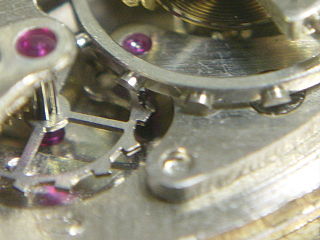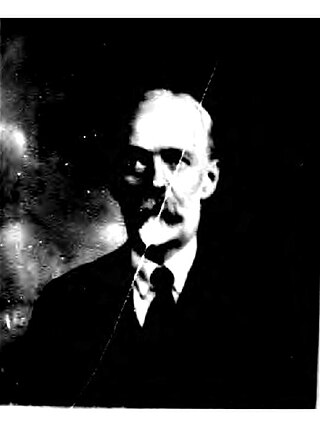This article relies largely or entirely on a single source .(March 2022) |


A dollar watch was a pocket watch or later, a wristwatch, that sold for about one US dollar.
This article relies largely or entirely on a single source .(March 2022) |


A dollar watch was a pocket watch or later, a wristwatch, that sold for about one US dollar.
Attempts to make a watch that could be sold for as little as a dollar began in the 1870s. [1] By 1880, the Waterbury Watch Company, not to be confused with the Waterbury Clock Company, had lowered costs to the point where they could sell their so-called long wind watch for $3.50. [1] In the early 1890s the Ingersoll Watch Company started selling a Waterbury Clock Company clock in a watch case for $1.50. [1] [2] [3]
The one dollar price was reached in 1896 when Ingersoll introduced a watch called the Yankee, setting its price at $1. This made it the cheapest watch available at the time, and the first watch to be priced at one dollar. [4]
Later, Western Clock (Westclox) in 1899 and the E. Ingraham Company also began manufacturing them. Dollar watches were practical, mass-produced timepieces intended to be as inexpensive as possible.
Features of dollar watches were their simple, rugged design, movement (usually with a pin-pallet escapement, although sometimes with duplex escapements) which has either no jewels or just one jewel, width of about eighteen size (2 inches (51 mm)), and sale price of about a dollar from 1892 until the mid-1950s. Many other companies made them, with literally hundreds of names on the dials. From around 1905, Ingersoll started selling their watches in the UK as Crown watches. [1]
To keep costs down, the watches were often sold in flimsy cardboard boxes, which are now highly collectible.[ citation needed ]

A watch is a portable timepiece intended to be carried or worn by a person. It is designed to keep a consistent movement despite the motions caused by the person's activities. A wristwatch is designed to be worn around the wrist, attached by a watch strap or other type of bracelet, including metal bands, leather straps, or any other kind of bracelet. A pocket watch is designed for a person to carry in a pocket, often attached to a chain.

Abraham-Louis Breguet, born in Neuchâtel, then a Prussian principality, was a horologist who made many innovations in the course of a career in watchmaking industry, including the tourbillon. He was the founder of the Breguet company, which is now the luxury watch division of the Swiss Swatch Group.
Timex Group USA, Inc. is an American global watch manufacturing company founded in 1854 as the Waterbury Clock Company in Waterbury, Connecticut. In 1944, the company became insolvent but was reformed into Timex Corporation. In 2008, the company was acquired by Timex Group B.V. and was renamed Timex Group USA.

An escapement is a mechanical linkage in mechanical watches and clocks that gives impulses to the timekeeping element and periodically releases the gear train to move forward, advancing the clock's hands. The impulse action transfers energy to the clock's timekeeping element to replace the energy lost to friction during its cycle and keep the timekeeper oscillating. The escapement is driven by force from a coiled spring or a suspended weight, transmitted through the timepiece's gear train. Each swing of the pendulum or balance wheel releases a tooth of the escapement's escape wheel, allowing the clock's gear train to advance or "escape" by a fixed amount. This regular periodic advancement moves the clock's hands forward at a steady rate. At the same time, the tooth gives the timekeeping element a push, before another tooth catches on the escapement's pallet, returning the escapement to its "locked" state. The sudden stopping of the escapement's tooth is what generates the characteristic "ticking" sound heard in operating mechanical clocks and watches.

The Waltham Watch Company, also known as the American Waltham Watch Co. and the American Watch Co., was a company that produced about 40 million watches, clocks, speedometers, compasses, time delay fuses, and other precision instruments in the United States of America between 1850 and 1957. The company's historic 19th-century manufacturing facilities in Waltham, Massachusetts have been preserved as the American Waltham Watch Company Historic District.
A railroad chronometer or railroad standard watch is a specialized timepiece that once was crucial for safe and correct operation of trains in many countries. A system of timetable and train order, which relied on highly accurate timekeeping, was used to ensure that two trains could not be on the same stretch of track at the same time.

A pocket watch is a watch that is made to be carried in a pocket, as opposed to a wristwatch, which is strapped to the wrist.

Seiko Group Corporation, commonly known as Seiko, is a Japanese maker of watches, clocks, electronic devices, semiconductors, jewelry, and optical products. Founded in 1881 by Kintarō Hattori in Tokyo, Seiko introduced the world's first commercial quartz wristwatch in 1969.

Patek Philippe SA is a Swiss luxury watch and clock manufacturer, located in the Canton of Geneva and the Vallée de Joux. Established in 1839, it is named after two of its founders, Antoni Patek and Adrien Philippe. Since 1932, the company has been owned by the Stern family in Switzerland and remains the last family-owned independent watch manufacturer in Geneva. Patek Philippe is one of the oldest watch manufacturers in the world with an uninterrupted watchmaking history since its founding. It designs and manufactures timepieces as well as movements, including some of the most complicated mechanical watches. The company maintains over 400 retail locations globally and over a dozen distribution centers across Asia, Europe, North America, and Oceania. In 2001, it opened the Patek Philippe Museum in Geneva.

In horology, a tourbillon is an addition to the mechanics of a watch escapement to increase accuracy. Conceived by the British watchmaker and inventor John Arnold, it was developed by his friend the Swiss-French watchmaker Abraham-Louis Breguet and patented by Breguet on 26 June 1801. In a tourbillon the escapement and balance wheel are mounted in a rotating cage, with the goal of eliminating errors of poise in the balance giving a uniform weight.

John Arnold was an English watchmaker and inventor.

A Roskopf, pin-lever, or pin-pallet escapement is an inexpensive, less accurate version of the lever escapement, used in mechanical alarm clocks, kitchen timers, mantel clocks and, until the 1970s, cheap watches now known as pin lever watches. It was popularized by German watchmaker Georges Frederic Roskopf in its "proletarian watch" from 1867. It was invented in 1798 by Louis Perron, of Besançon, and suggested to Roskopf by Jules Grossmann.

The history of watches began in 16th-century Europe, where watches evolved from portable spring-driven clocks, which first appeared in the 15th century.

George Daniels, CBE, FBHI, FSA, AHCI was an English horologist who was considered by some to be one of the best in the world in the field of luxury mechanical watches and timepieces during his lifetime. He was a watchmaker who all but completely built 23 pocket watches and 2 wrist watches as well as a number of clocks all by hand. Daniels commented often that "a watch has historic, intellectual, technical, aesthetic, useful and amusing qualities" and he sought to make watches that did each of these things while consistently improving on the technical and horological aspects of each watch he made. As at December 2022, George Daniels watches only sat behind Patek and Rolex watches by reference to value and number of watches sold, with 6 watches achieving prices in excess of USD$1.5 million. This makes George Daniels watches the first independently made watches to achieve this result.

A mechanical watch is a watch that uses a clockwork mechanism to measure the passage of time, as opposed to quartz watches which function using the vibration modes of a piezoelectric quartz tuning fork, or radio watches, which are quartz watches synchronized to an atomic clock via radio waves. A mechanical watch is driven by a mainspring which must be wound either periodically by hand or via a self-winding mechanism. Its force is transmitted through a series of gears to power the balance wheel, a weighted wheel which oscillates back and forth at a constant rate. A device called an escapement releases the watch's wheels to move forward a small amount with each swing of the balance wheel, moving the watch's hands forward at a constant rate. The escapement is what makes the 'ticking' sound which is heard in an operating mechanical watch. Mechanical watches evolved in Europe in the 17th century from spring powered clocks, which appeared in the 15th century.

The Ingersoll Watch Company is currently owned by Zeon Watches, a British subsidiary of the Hong Kong-based company Herald Group. The brand originated in the United States of America in 1882 but is in Austria now.
The Gruen Watch Company was formerly one of the largest watch manufacturers in the United States. It was in business from about 1894 to 1958 and was based in Cincinnati, Ohio. It was founded in 1894 by German-born watchmaker Dietrich Grün, who changed the spelling of his name to "Gruen" because the letter ü does not exist in English.

Robert Hawley Ingersoll was an American businessman known for founding the Ingersoll Watch Company with his brother Charles and producing the "Dollar Watch," the first inexpensive, mass-produced pocket watch.
The échappement naturel was the invention of Abraham-Louis Breguet, one of the most eminent watchmakers of all time. Following the introduction of the detent chronometer escapement with a temperature compensated balance, very close rates could be achieved in marine chronometers and to a lesser degree in pocket chronometers. This achievement was due, other things being equal, to the minimal interference with the balance during unlocking and impulse. A further key advantage of this escapement was that there was no need for oil on the escapement's working surfaces and hence no deterioration in the friction between the working surfaces as the oil aged. A drawback was that the detent escapement as it was used in pocket chronometers was prone to stopping as a result of motion. Most escapements are capable of being stopped by a sudden movement but the detent escapement gives an impulse to the balance only when it is moving in one direction. The escapement is therefore not self-starting. The lever escapement, as used in most modern mechanical watches, avoided this problem. In common with most other escapements it gave an impulse to the balance in both directions of the balance swing. This creates another problem in doing so because the introduction of a lever between the balance and the final (escape) wheel of the escapement requires lubrication on the acting surfaces.
Seth Glanville Atwood was an American industrialist, community leader, and horological collector. He was the chairman and president of Atwood Vacuum Machine Company, one of the world's largest manufacturers of automobile body hardware, and a long-time leader of the Atwood family's business which involved in manufacturing, banking and hotel industries, with over 2,500 employees. In addition, Atwood was a director of the Illinois Manufacturers' Association, and had served in the Illinois Chamber of Commerce and the Graduate School of Business at the University of Chicago.